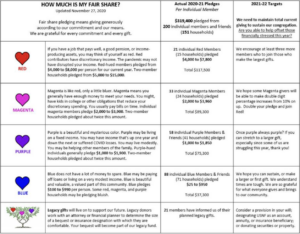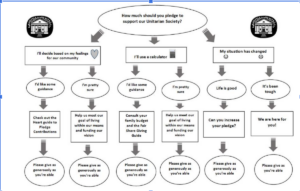This perennial question is asked by newcomers and long-time members alike, especially when finance and stewardship education is not part of a congregation’s culture. The 2006 publication of a UUA Fair Share Giving Guide and its revisions helped many congregations support generous annual budget drive giving based on economic capacity. Some, however, found it cumbersome to use. This year, the Stewardship for Us team is revising the Giving Guide using an equity lens that includes more than income. Over 80 folks gathered on January 31st for a Friday Forum on Giving Guides.
We shared the following Giving Guides, starting with the UUA Guide many are familiar with and using:
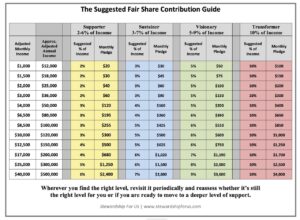
Many found this overwhelming, some found it very practical. Many felt that it didn’t adequately take into account the variety of people’s individual circumstances, and that using adjusted gross income was confusing.
“A Simpler Giving Guide”
| Annual Household Income | Monthly Giving at 10% | Monthly Giving at 5% | Monthly Giving at 3% |
| $20,000.00 | $167 | $83 | $50 |
| $30,000.00 | $250 | $125 | $75 |
| $40,000.00 | $333 | $167 | $100 |
| $50,000.00 | $417 | $208 | $125 |
| $60,000.00 | $500 | $250 | $150 |
| $70,000.00 | $583 | $292 | $175 |
| $80,000.00 | $667 | $333 | $200 |
| $100,000.00 | $833 | $417 | $250 |
| $125,000.00 | $1,042 | $521 | $313 |
| $150,000.00 | $1,250 | $625 | $375 |
“A Simpler Giving Guide” had similar comments. Some found it didn’t give enough information. Some found it easier to understand. Others commented that neither guide addresses the complexity of income/expenses/debt/ medical debt/number of kids and so on. And since both guides are based on income, leaving folks living on retirement assets in a slightly different situation not adequately addressed by these charts.
Some congregations are moving to more narrative guides, like this prototype:
People liked that it included information about the last pledge drive, had a narrative that enabled one to find themselves, and that it made an appeal for legacy gifts. (Although legacy gifts should be considered as an addition to a regular annual pledge, not as an alternative to one). Some people found it too busy, some didn’t like the color coding of pledging households.
We shared this flow-chart to help folks think about giving:
Most found that it wouldn’t be an adequate substitute for a giving guide that provided actual amounts or percentages, but could help people think about how to make their pledge decision.
And, finally, we shared this stepping up guide:
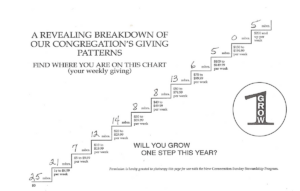
Some liked that the steps included how many people have given in each step. Others found that the stair-step could appear judgmental.
Here’s the entire slide show that includes all of these examples and more!
A subgroup of the participants signed up to be a part of further conversations about giving guides. They met on Friday, 2/21 to start to massage the initial findings, and will meet again on Friday, March 14 at 9PT/10MT/11CT/12ET. We’ll meet in this Zoom Room. If you’d like to join to be a part of our collaborative process, please leave a message in the chat with your best contact information, or email me S4UsLydia@gmail.com. Together, we’ll create a giving guide that better meets the current context of our times!
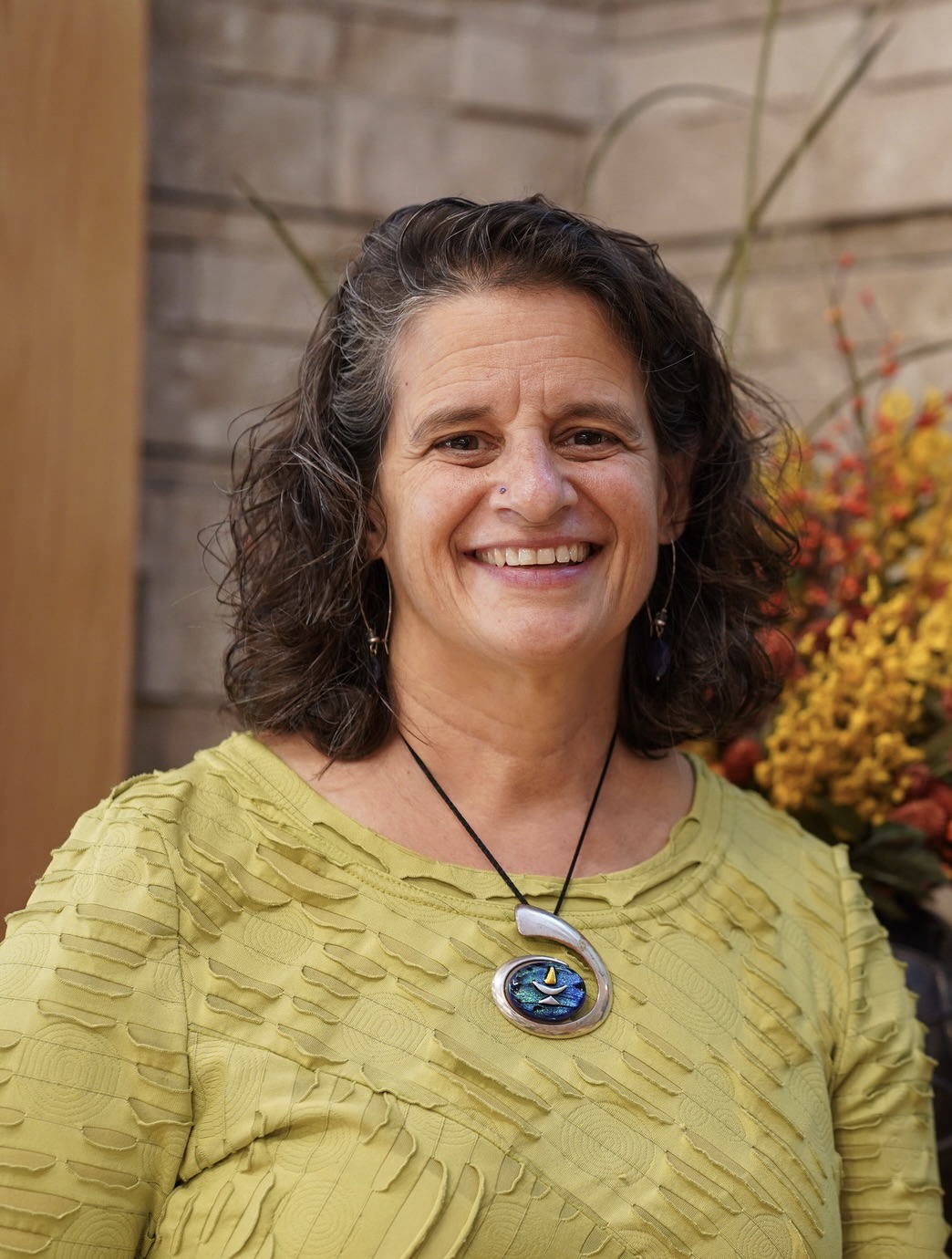
Rev. Lydia Ferrante-Roseberry loves helping congregations thrive. She brings over 20 years of parish ministry experience into her consulting with Stewardship for Us. Having served three congregations of various sizes, she has helped each of them align their vision with their values, and then foster generous giving to live into that vision. Rev. Lydia is most passionate about the individual and community transformation that is possible when people come together to create something none could have imagined alone.

